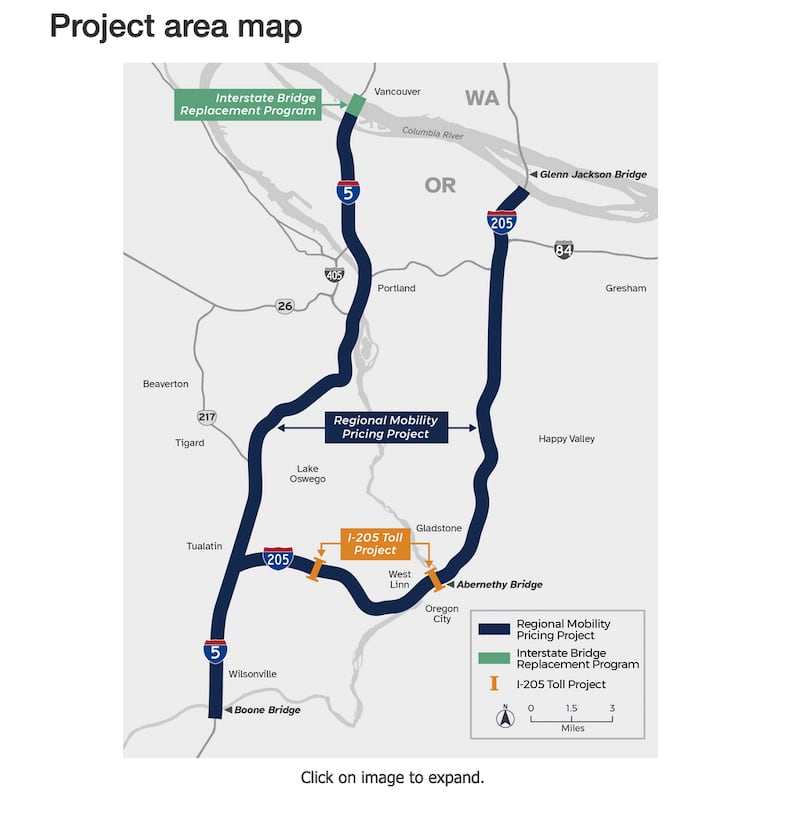Back in 2017, lawmakers passed a $5.3 billion transportation funding bill (House Bill 2017) that included projects such as expanding Interstate 5 at the Rose Quarter and Interstate 205 in Clackamas County.
Lawmakers knew even with the allocation of $5.3 billion, the Oregon Department of Transportation would need more money to complete the laundry list of projects around the state, so they told the agency to establish a “congestion relief fund” and to use tolling to generate revenue for that fund.
Since then, ODOT has moved toward some form of asking motorists to pay for the right to use I-5 and I-205 in the metro area.
Here’s ODOT’s map of the stretches of highway that could be affected.

ODOT and Metro have spent a lot of time looking both at how charging for highway use might work, what the proceeds might be used for—and how various groups feel about what would mark a significant policy change.
Historically, highway departments used fixed-rate tolling to pay for infrastructure. A current example: the toll vehicles pay to cross the Hood River bridge between Washington and Oregon.
More recently, agencies have engaged in variable-rate tolling, in which prices increase at peak usage and decline when fewer drivers are on the road.
So-called congestion pricing is aimed at reducing rush-hour traffic jams, rather than simply raising money, although, of course, congestion pricing also raises revenue. ODOT says there are about 40 congestion pricing projects currently in place in the U.S.
(Metro produced a study on congestion pricing on local freeways last year.)
The broad policy questions of how much to charge drivers and how to use the proceeds remain unresolved, and getting public input on those questions is part of ODOT’s process as the agency moves toward a draft environmental assessment of what the agency calls its Regional Mobility Pricing Project later this year.
To submit a comment to ODOT, click here.
